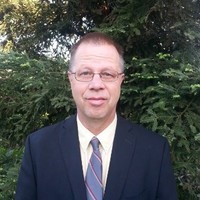
Dennis J. Derickson
- Courses0
- Reviews0
- School: California Polytechnic State University
- Campus:
- Department: Electrical Engineering
- Email address: Join to see
- Phone: Join to see
-
Location:
1 Grand Avenue
San Luis Obispo, CA - 93407 - Dates at California Polytechnic State University: -
- Office Hours: Join to see
Biography
California Polytechnic State University - Electrical Engineering
Department Chair Electrical Engineering at Cal Poly
Higher Education
Dennis
Derickson
San Luis Obispo, California Area
Employment: 1981-2000 HP/Agilent Test and measurement
2000-2003: Cierra Photonics Start-Up company
2003-2005: Bookham (they acquired Cierra Photonics)
2005-Present: California Polytechnic State University
Specialties: rf/Microwave/Photonic Design
Microwave ,Optical Test and Measurement Techniques
Digital Communictions Test and Measurement
Optical communications
Experience
Hewlett-Packard
Electrical Engineer
Dennis worked at Hewlett-Packard as a Electrical Engineer
Cierra Photonics/Bookham/Oclaro
Director of Product Marketing
Dennis worked at Cierra Photonics/Bookham/Oclaro as a Director of Product Marketing
Cal Poly
Department Chair of Electrical Engineering at Cal Poly
Dennis worked at Cal Poly as a Department Chair of Electrical Engineering at Cal Poly
Agilent
Engineer
Dennis worked at Agilent as a Engineer
Education
University of Wisconsin-Madison
Master of Science (MS)
Electrical Engineering
South Dakota State University
BSEE
electrical engineering
UC Santa Barbara
Ph.D.
Electrical Engineering
Publications
Hybrid silicon mode-locked laser with improved RF power by impedance matching
SPIE Photonics West 2015, Silicon Photonics X
We design and discuss an impedance matching solution for a hybrid silicon mode-locked laser diode (MLLD) to improve peak optical power coming from the device. In order to develop an impedance matching solution, a thorough measurement and analysis of the MLLD as a function of bias on each of the laser segments was carried out. A passive component impedance matching network was designed at the operating frequency of 20 GHz to optimize RF power delivery to the laser. The hybrid silicon laser was packaged together in a module including the impedance matching circuit. The impedance matching design resulted in a 6 dB (electrical) improvement in the detected modulation spectrum power, as well as approximately a 10 dB phase noise improvement, from the MLLD. Also, looking ahead to possible future work, we discuss a Step Recovery Diode (SRD) driven impulse generator, which wave-shapes the RF drive to achieve efficient injection. This novel technique addresses the time varying impedance of the absorber as the optical pulse passes through it, to provide optimum optical pulse shaping.